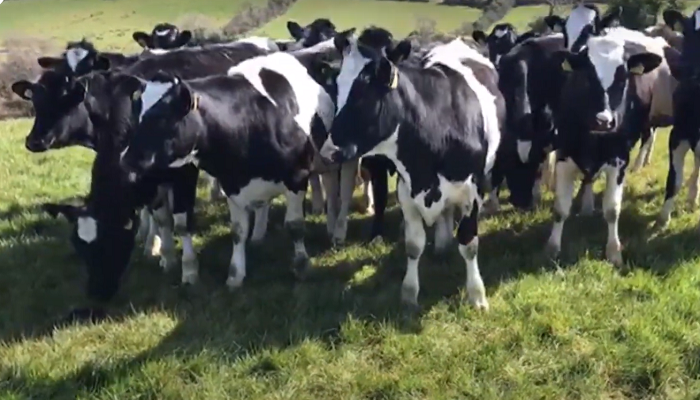26 March 2025
Ensuring the best performance from synchronisation programmes

Dairy Specialist at Teagasc, Stuart Childs takes a closer look at synchronisation programmes and offers tips on how to ensure maximum performance.
Synchronisation of heifers, but also of cows to a lesser degree, has become increasingly popular in recent years. This is associated with the control that it offers in terms of timing of AI for sexed semen in particular, which is a time sensitive process.
Synchronisation ensures that the insemination can take place during the right window compared to ‘guessing’ the onset of heat if depending on the detection of natural heats. Some concern has been raised by farmers in relation to the cost of the synchronisation process, as there is no doubt that it is expensive. However, research from Moorepark has found that milk revenue in the subsequent lactation is greatest when synchronisation is used and cows selected for sexed are served on Mating Start Date (MSD) due to greater days in milk overall.
Time efficient
It is also important to highlight from a work organisation point of view that synchronisation gives significant control to the farmer around the breeding of heifers. These animals are often on out farms that may not have fantastic infrastructure, thus making it challenging to bring in heifers for AI on a regular basis. Synchronisation is heat detection on your terms within reason, as you dictate the day insemination is to take place following discussions with you AI technician and the actions of the other days then revolve around this.
Timing is critical
In terms of ensuring maximum performance from synchronisation, the first step is to ensure availability of the technician at a time and date that suits both you and them. Once this is agreed, you can set out the programme to follow. It is important to note that with the exception of the first day when the progesterone device is inserted, the timing of the injections is important and needs to take place at the nominated time not two hours later or two hours earlier because it suits better.
You are trying to control the oestrus cycle and therefore any deviation from the nominated times weakens that control, so stick to the times set out.
A common mistake is giving the wrong injection on the wrong day, so make sure that you are organised at the start of the process to make sure that there are no mix ups.
Target weights
It is of critical importance that heifers are well grown and at target weight for breeding when the synchronisation programme begins. As already stated, the programme is controlling the oestrus cycle. If the animals are not at target weight and have not been cycling prior to initiation of the programme, conception rate will not be high as you are effectively jump starting the breeding cycle rather than controlling it in this situation. Therefore, with a little more than a month to go ahead of breeding, weighing of heifers and actioning plans to correct poor weights need to take place sooner rather than later.
To calculate the ideal weight to breed your heifers, view a useful excel calculator here.
Bull power
A major weakness observed at farm level in relation to synchronisation is an unwillingness to AI the first round of repeats. If we assume a 60% conception to first service with sexed semen, and serve 25 heifers initially, 10 repeats will occur. These heats will occur over a 4-6 day window from 18 to 24 days post first insemination. It is an unfair expectation of a young bull to serve all 10 heifers over this period and put them in calf so it is advisable that AI would be done to reduce the workload of the bull to a more manageable level in the subsequent round of repeats.
Summary
Synchronisation can be very successful when the process is carried out correctly on animals that are fit for service. Failure to AI the first round of repeats three weeks later is resulting in late calving heifers which underdoes some of the good work of synchronising in the first place. In order to maximise success:
- Ensure heifers are on target prior to breeding;
- Follow the synchronisation programme to the letter of the law;
- AI the first round of repeats to reduce pressure on the bull.
